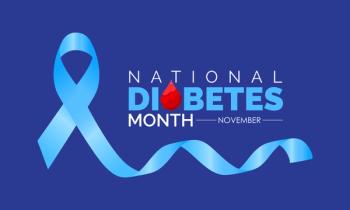
Immunization Awareness Month Highlights the Role of Pharmacies

By sharpening our vaccine confidence skills and advocating for expanded immunization scopes of practice, we can help improve convenient vaccine access in the US.
August is Immunization Awareness Month, and with this comes an opportunity to showcase the role pharmacies play in providing vaccinations. Vaccination is one of the easiest things that can be done to prevent serious diseases and illness, and pharmacies provide a convenient place for many Americans to get their vaccines.
The American Association of Immunologists notes that widespread immunization has led to global eradication of smallpox, the elimination of polio in the United States, and prevention of infections such as measles.1 The CDC reports that over 307 million COVID-19 vaccines were given by Federal Retail Pharmacy Program partners as of August 2023,2 playing a large role in preventing illness, hospitalizations, and deaths during the pandemic.
Many people are hesitant to receive vaccinations due to a variety of concerns including cultural, social, and political factors.3 Although vaccination rates remain high, a multifactorial approach is needed to maintain and increase confidence in vaccines. As a trusted member of the health care team, pharmacists can promote vaccine confidence in their practice settings, remembering that patients are more likely to accept a recommendation for a vaccine when it comes from their trusted pharmacist. The CDC created a Vaccination Field Guide to promote COVID-19 vaccinations during the pandemic.4 The guide provides multiple approaches to improve vaccine confidence and uptake, and demonstrates that a combination of strategies is most effective. Although the guide was developed around COVID-19 vaccines, the practical approaches are applicable to other barriers to community vaccination. Additionally, immunize.org provides vaccine confidence resources that are organized by specific concerns.3
According to the CDC, more than 90% of the US population lives within 5 miles of a pharmacy, and patients visit the community pharmacist 12 times more frequently than their primary care provider.5 These touchpoints can be used to assess vaccination status and suggest needed vaccines to keep patients and their loved ones healthy. Although it is best to get vaccinations on the recommended schedule, it is easy to get caught up if patients fall behind. Community pharmacies can provide vaccine-focused programs such as back to school events; preparing for respiratory season with flu, COVID-19, and RSV; and even travel vaccinations. In addition to taking care of patients’ health care needs, this can help build a strong patient-pharmacist relationship.
To continue to improve vaccination rates, attention is needed around pharmacist scope of practice for vaccinations. Pharmacists in every state are able to administer vaccines to many age groups, although the laws vary greatly. Legislation may limit which vaccines may be given in a pharmacy and which age groups may be vaccinated. During the COVID-19 pandemic, pharmacists were able to administer any vaccine recommended by the Advisory Committee on Immunization Practices to those ages 3 to 18, along with flu and COVID-19 vaccines to those 3 and older.2 Although these authorities were temporary due to the emergency, many states have expanded the pharmacist’s role in providing routine and seasonal vaccines to broad patient populations.
As we celebrate Immunization Awareness Month, we should reflect on the impact community pharmacies have on vaccination care in the United States. By sharpening our vaccine confidence skills and advocating for expanded immunization scopes of practice, we can help improve convenient vaccine access in the US.
REFERENCES
1. Statement of Mark M. Davis, PhD, President of The American Association of Immunologists (AAI), in recognition of National Immunization Awareness Month. August 1, 2022. Accessed August 28, 2024. https://www.aai.org/AAISite/media/About/NIAM/AAI-Official-Statement-for-NIAM.pdf
2. The Federal Retail Pharmacy Program for COVID-19 Vaccination. CDC. Updated August 18, 2023. Accessed August 28, 2024. https://archive.cdc.gov/www_cdc_gov/vaccines/covid-19/retail-pharmacy-program/index.html
3. Vaccine Confidence and Addressing Concerns. Immunize.org. Updated June 7, 2024. Accessed August 28, 2024. https://www.immunize.org/clinical/vaccine-confidence/
4. COVID-19 Vaccination Field Guide: 12 Strategies for Your Community. CDC. Accessed August 28, 2024. https://www.cdc.gov/vaccines/covid-19/downloads/vaccination-strategies.pdf
5. Strand MA, Bratberg J, Eukel H, Hardy M, Williams C. Community pharmacists’ contributions to disease management during the COVID-19 pandemic. Prev Chronic Dis. 2020;17:200317. doi:10.5888/pcd17.200317
Newsletter
Stay informed on drug updates, treatment guidelines, and pharmacy practice trends—subscribe to Pharmacy Times for weekly clinical insights.


















































































































































































































